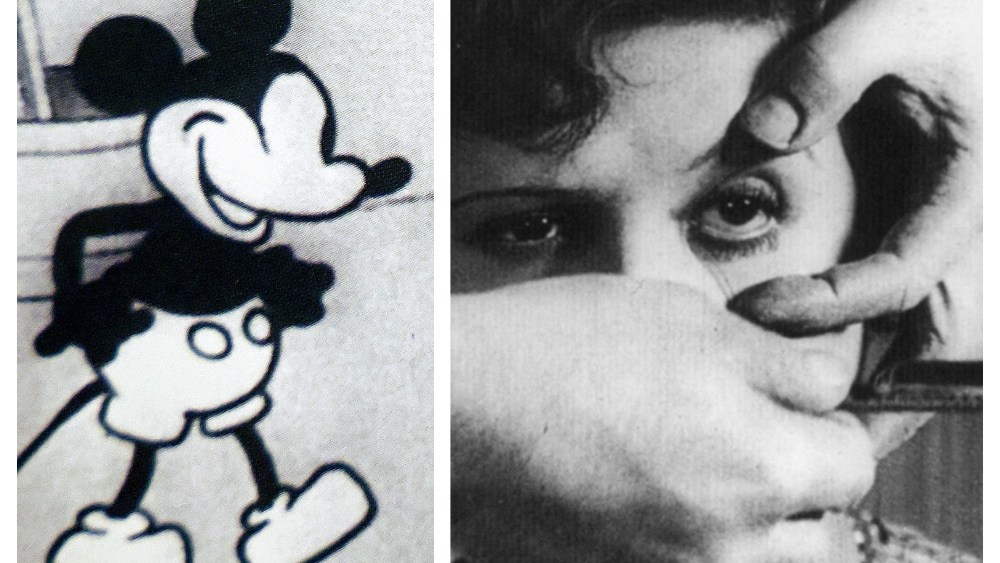How This Year’s Public Domain Entries Could Be Turned Into Horror Films
It’s become an annual ritual: Every Jan. 1, more classic works of art or characters enter the public domain, and exploitation filmmakers with a tiny budget and a big taste for grisliness are scouring the list, looking for suddenly free intellectual property to turn into horror fare. Hence the slasher films that have already been created or are in the works turning beloved characters into homicidal maniacs, like the infamous “Winnie-the-Pooh: Blood and Honey.”
But these PD-sploitation filmmakers are really picking low-hanging fruit and not digging nearly deep enough into the lists for ideas. So we’ve identified some films, novels and even memoirs and pop songs that are brand new to the public domain, as of the beginning of 2025, just begging to be bloodied up. Yes, including Popeye, the seeming innocent who arguably always had a bit of the glint of a serial killer in his eye — but also less obvious fare like Hemingway and Faulkner novels, a Marx Brothers comedy, sweet little Tintin, and even big, bad Virginia Woolf, of whom you should be very afraid.
“The Karnival Kid,” Mickey Mouse short. This 1929 short, Mickey Mouse’s ninth, was the first in which the character wore his trademark white gloves — all the better not to leave any fingerprints as he stalks and strangles victims like Clarabelle Cow in a 2020s remake. Just as in the real-life Disney universe, the generally unloved recurring character Kat Nipp is never missed after his mysterious disappearance. (But Mickey will have to speak in a deep voice when he encounters his prey, for now; although he spoke for the first time in “The Karnival Kid,” he didn’t pick up Walt Disney’s falsetto speaking voice until a later date.)
“The Cocoanuts,” the Marx Brothers’ first feature film. In a new version, characters representing Groucho, Harpo, Chico and Zeppo can once again staff the Hotel de Cocoanut. But little will the Margaret Dumont character suspect that all this slapstick mayhem is masking a murder spree, and that eventually she will be The Final Girl.
Popeye character, created by E. C. Segar. There’s blood on the spinach, as the miracle vegetable further empowers the unstoppable mad sailor when he and his mousy girlfriend go on a “Badlands”-style killing spree. (Olive Oyl, incidentally, preceded Popeye into the public domain by 10 years. Popeye’s main adversary is still a few years away from being admitted, but imagine the possibilities for a Bluto having his own horror franchise.)
“A Farewell to Arms,” novel by Ernest Hemingway. …and to legs. Hemingway’s chosen title was promising but, till now, never literally fulfilled. In the contemporary film update, soldier Frederic Henry’s beloved nurse, Catherine Barkley, dies in childbirth in the first 10 minutes instead of at the end. Crazed with grief, Frederic heads to the chainsaw store and spends the remainder of the movie dismembering the commanders who forced him and his love to spend precious time apart.
“Un Chien andalou (An Andalusian Dog),” short film by Luis Buñuel. Now with 1,000% more eyeballs and razors.
“The Sound and the Fury,” novel by William Faulkner. A cleverly disjointed structure recalls the Faulkner-esque “Strange Darling.” Here, the updated story offers the points of views of all four members of the Compson clan — brooding brothers Benjy, Jason and Quentin, plus the now outrightly whorish Caddy — who bamd together and cleverly use stream-of-consciousness banter to lure confused locals to their Southern-gothic doom.
The comic book character Tintin. Tintin’s job as a reporter gives him a sneakily sinister edge in gaining access to sources who become victims of his homicidal impulses. Some meet their bloody end via his accomplice, the crossbred bull terrier/rottweiler Snowy.
“Singin’ in the Rain,” song by Arthur Freed and Nacio Herb Brown. First heard in the 1929 film “The Hollywood Music Box Revue,” this carefree ditty is ripe for adaptation as an ironic soundtrack to disturbing scenes of psychopathic home invasion and murder. No, hold on, scratch that… there are some lines that surely no filmmaker would ever dare cross.
“All Quiet on the Western Front,” English translation of novel by Erich Maria Remarque. Do you know why it’s so quiet? Because alienated young German soldier Paul Bäumer has systematically slaughtered every one of his unsuspecting WWI army pals during quiet moments in the trenches when others are distracted by mortar shells, disguising the series of grisly murders as standard combat fatalities.
“A Room of One’s Own,” memoir by Victoria Woolf. “A woman must have money and a room of her own if she is to write fiction,” Woolf famously wrote in this groundbreaking book. As it will turn out, the fictionalized and updated Woolf will also need an underground dungeon of her own, where she’ll shackle and do unspeakable things to the most evil perpetuators of the Victorian patriarchy.
“The Seven Dials Mystery,” novel by Agatha Christie. Crime-solver Lady Eileen “Bundle” Brent (a ‘20s precursor to Christie’s Miss Marple) had a lot of red herrings to contend with in the book, as always. In the contemporary film version, surveying all the murder suspects holed up in a remote mansion, she decides it’s too much work to figure out whodunit, murmurs “Kill ‘em all and let God sort ‘em out,” and eviscerates them, one by one, until there are none.
“Rope,” play by Patrick Hamilton. Serial killers who may even get away with it (as seen later in the Hitchcock film adapted from this source material)? This doesn’t need any updating to be full-on horror. Well-played, Patrick Hamilton, you sick 1920s post-modernist.
“The Story of My Experiments With Truth,” memoir by Mahatma Gandhi. Experiments with truth… or with the Human Centipede? A talented exploitation filmmaker could show how, when the world’s most renowned pacifist finally snaps, he snaps big-time.
“Tiptoe Through the Tulips,” song by Alfred Dubin and Joseph Burke. You know, Tiny Tim does bear a slight resemblance to the Terrifier.


